All Images
News Release 09-240
Advancing STEM Education
NSF initiative brings together different scientific disciplines and diverse communities of faculty and students--often on the same campus
This material is available primarily for archival purposes. Telephone numbers or other contact information may be out of date; please see current contact information at media contacts.
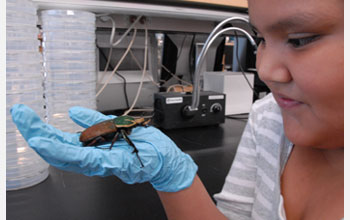
One of the elements of I3 effort to prepare middle school math and science teachers is a STEM Summer College-for-Kids, a two week summer day camp for 11-14 year olds. Here, a student holds a large South African beetle.
Credit: Charles Kazilek, Arizona State University
Download the high-resolution JPG version of the image. (1.4 MB)
Use your mouse to right-click (Mac users may need to Ctrl-click) the link above and choose the option that will save the file or target to your computer.
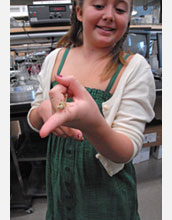
At ASU's STEM Summer College-for-Kids, middle-school students learn about social insects as part of a summer "I Love Bugs!" course. Here a student holds a grasshopper.
Credit: Charles Kazilek, Arizona State University
Download the high-resolution JPG version of the image. (1.8 MB)
Use your mouse to right-click (Mac users may need to Ctrl-click) the link above and choose the option that will save the file or target to your computer.
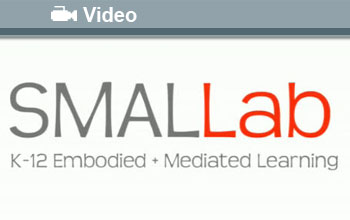
This video describes the Situated Multimedia Arts Learning Lab (SMALLab), a mixed reality digital physical learning environment for science learning. SMALLab is one of the partner grants for ASU's I3 project.
Credit: Aisling Kelliher; Arts, Media & Engineering; Arizona State University
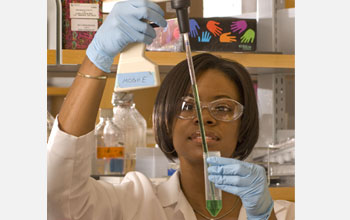
A student does research in the lab as part of Rutgers' Research in Science and Engineering Program (RISE), which offers research opportunities at state-of-the-art facilities to underrepresented, economically disadvantaged and first-generation undergraduates.
Credit: Nick Romanenko
Download the high-resolution JPG version of the image. (1 MB)
Use your mouse to right-click (Mac users may need to Ctrl-click) the link above and choose the option that will save the file or target to your computer.
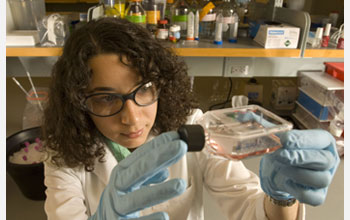
A student takes advantage of Rutgers' state-of-the-art lab facilities. The Rutgers I3 effort will leverage and integrate the best practices and resources of a number of existing STEM research and training programs.
Credit: Nick Romanenko
Download the high-resolution JPG version of the image. (1.5 MB)
Use your mouse to right-click (Mac users may need to Ctrl-click) the link above and choose the option that will save the file or target to your computer.
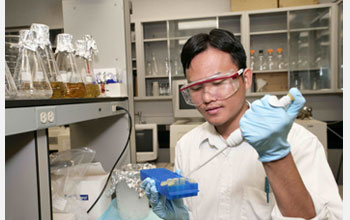
This student is getting important experience in the lab. Rutgers' I3 project will focus on preparation for graduate education, transition to graduate education, and preparation for and transition to research careers in academia, government and industry while increasing the participation of traditionally underrepresented groups.
Credit: Nick Romanenko
Download the high-resolution JPG version of the image. (1.3 MB)
Use your mouse to right-click (Mac users may need to Ctrl-click) the link above and choose the option that will save the file or target to your computer.
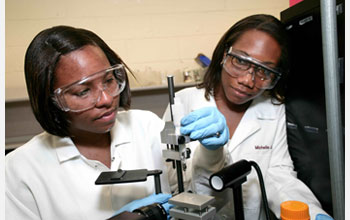
Two students work on a research project as part of Rutgers' I3 effort. Rutgers' goal is to develop a model that will recruit, retain, mentor and educate graduate students to become leading scientists in the nation.
Credit: Nick Romanenko
Download the high-resolution JPG version of the image. (1.2 MB)
Use your mouse to right-click (Mac users may need to Ctrl-click) the link above and choose the option that will save the file or target to your computer.
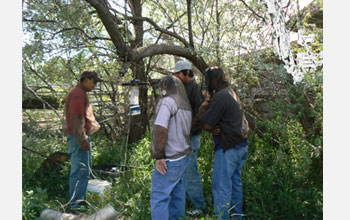
William Bell, Fort Belknap College instructor, with students doing research on the Fort Belknap Indian Reservation about transmission of the West Nile virus.
Credit: Dan Kinsey, Fort Belknap College
Download the high-resolution JPG version of the image. (4 MB)
Use your mouse to right-click (Mac users may need to Ctrl-click) the link above and choose the option that will save the file or target to your computer.
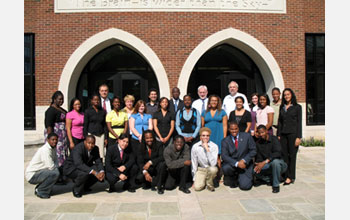
The Fisk-Vanderbilt Master's-to-Ph.D Bridge program was established in 2004. In just five years the program has attracted 31 underrepresented minority students, 60 percent of whom are women, and has become the nation's top producer of blacks earning master's degrees in physics. Since 2006 Fisk University has awarded about a third of the nation's African American master's degrees in physics. In academic year 2010-11 the program will become the top producer of African American PhDs in physics and astronomy. Shown are current Bridge students along with lead faculty and administrators from Fisk and Vanderbilt.
Credit: Donald Pickert, Vanderbilt University
Download the high-resolution JPG version of the image. (3.4 MB)
Use your mouse to right-click (Mac users may need to Ctrl-click) the link above and choose the option that will save the file or target to your computer.


